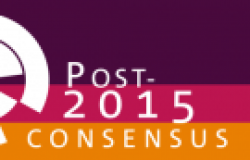What is the Best way to Reduce Waste and Increase Food Security?

The latest research from The Post-2015 Consensus' asks what is the best way to reduce waste and increase food security?
Almost one-quarter of all food in the world is lost each year, from harvesting and storage to wastage in the consumer’s kitchen.
We can expect almost a doubling of demand for food until 2050. This is both because the world will add another two billion mouths to feed, but also because of a surging new middle class will demand much more meat and dairy products, which again requires much more animal feed.
Fortunately, new analyses show that there are smart ways to reduce the world’s enormous food waste. For every dollar spent we can end up doing $13 of good ensuring more food security for the world. Interestingly, these solutions have little to do with the food waste campaigns heard through most of the rich world.
So, what is the best way to increase food security? This is a really vital issue because, if people aren’t properly fed, they get sick more easily and can’t work well, while children’s growth is stunted, disadvantaging them for the rest of their lives. Avoiding waste in the food chain – in the field, during processing and storage and in people’s houses – seems like a really good way to make the most of the crops a farmer grows.
In the rich world, the focus is mostly on food waste with the consumer. This makes sense, because more than half is lost in first world kitchens. But this is also because we can afford it – in the UK, the most wastage comes from salads, vegetables and fruits, which are luxury goods compared to the cheapest calories like grains and tubers eaten throughout the poor world. Likewise, smaller households waste more per person, because it is harder to put everything to use, while richer households waste more because they can afford the extra luxury of buying ‘just to be safe’.
There are many smart solutions – from simple curing of roots, tubers and bulbs, to expensive refrigeration. All of these technologies are very good investments in industrialized countries, so why aren’t they adopted in the developing world? In a new report, a team of economists from the International Food Policy Research Institute pointed out the main problem is lack of infrastructure. Simply put, if there are no proper roads, farmers cannot easily sell their surplus produce, which may then spoil before it can be eaten. The researchers found that four key factors could make a real difference to losses in the food chain: an electricity supply, paved roads, rail capacity and road capacity. These mean that farm produce can be sent to market and other food supplies brought in, and that grains can be dried or vegetables kept cool.
They estimate the overall cost to approximately halve post-harvest losses in the developing world would cost $239 billion over the next 15 years, but it would generate benefits of just over $3,000 billion, generating $13 of economic benefits for every dollar spent.
This has real-world impacts – it will bring down food prices to make food more affordable for poor people. In particular, about 4 million children would no longer suffer from malnutrition. Most of these gains would be in sub-Saharan Africa and South Asia, the world’s most deprived regions.
But it turns out there is an even better food target. Per dollar spent, we can achieve thrice the economic benefits and larger reductions in the number of people at risk of hunger and the number of malnourished children by focusing on higher efficiency rather than on preventing food losses.
Today, only about $5 billion is spent each year on research to improve the seven major global food crops, and just 10% of that is targeted to help small farmers in Africa and Asia. Investing an extra $88 billion in agricultural research and development over the next 15 years will increase yields by an additional 0.4% each year. This would reduce prices and improve food security to give nearly $3 trillion worth of benefits, an enormous $34 of good for every dollar spent.
You can read all of the papers on food security targets for the post-2015 development agenda here.
John Gibson, Professor of Economics, Waikato University writes the main report, peer-reviewed in perspective papers by Gaurav Datt, Associate Professor of Economics at Monash University and Valerie Kozel, independent economist formerly of the World Bank. An additional viewpoint is provided by Deborah Rogers of Initiative for Equality and Stanford University.


